The Geographic Distribution of the Share of adults with Functional Difficulties
This section describes and discusses the main results on the share of adults 15 and older with functional difficulties (or prevalence rates). The full set of results (Indicators P1, P2, P3) is available in each country’s Results Tables file.
Table 5.1: Share of adults with functional difficulties at the national and regional levels and number of regions per country
| Dataset/country | Share at the national level | Min. share at the regional level | Max. share at the regional level | Number of regions |
|---|---|---|---|---|
| DHS data | ||||
| Cambodia | 12.1 | 2.6 | 26.1 | 19 |
| Haiti | 24.9 | 22.5 | 28.5 | 11 |
| Mali | 19.3 | 12.2 | 25.7 | 9 |
| Maldives | 24.7 | 19.1 | 33.0 | 6 |
| Mauritania | 24.8 | 17.4 | 40.3 | 14 |
| Nigeria | 11.4 | 7.6 | 17.1 | 6 |
| Pakistan | 24.0 | 14.9 | 28.7 | 8 |
| Rwanda | 25.2 | 18.7 | 29.0 | 5 |
| Senegal | 14.5 | 12.4 | 16.0 | 4 |
| South Africa | 22.4 | 17.6 | 30.6 | 9 |
| Timor-Leste | 21.0 | 14.8 | 28.3 | 13 |
| Uganda | 32.8 | 17.5 | 45.6 | 15 |
| Census data | ||||
| Guatemala | 12.9 | 8.7 | 16.0 | 8 |
| Kenya | 12.7 | 3.9 | 23.8 | 47 |
| Tonga | 12.7 | 11.1 | 16.8 | 5 |
Source: Own calculations based on DHS data except for Guatemala, Kenya and Tonga where population census data was used for each country.
Figure 5.1: Share of adults with functional difficulties (%)
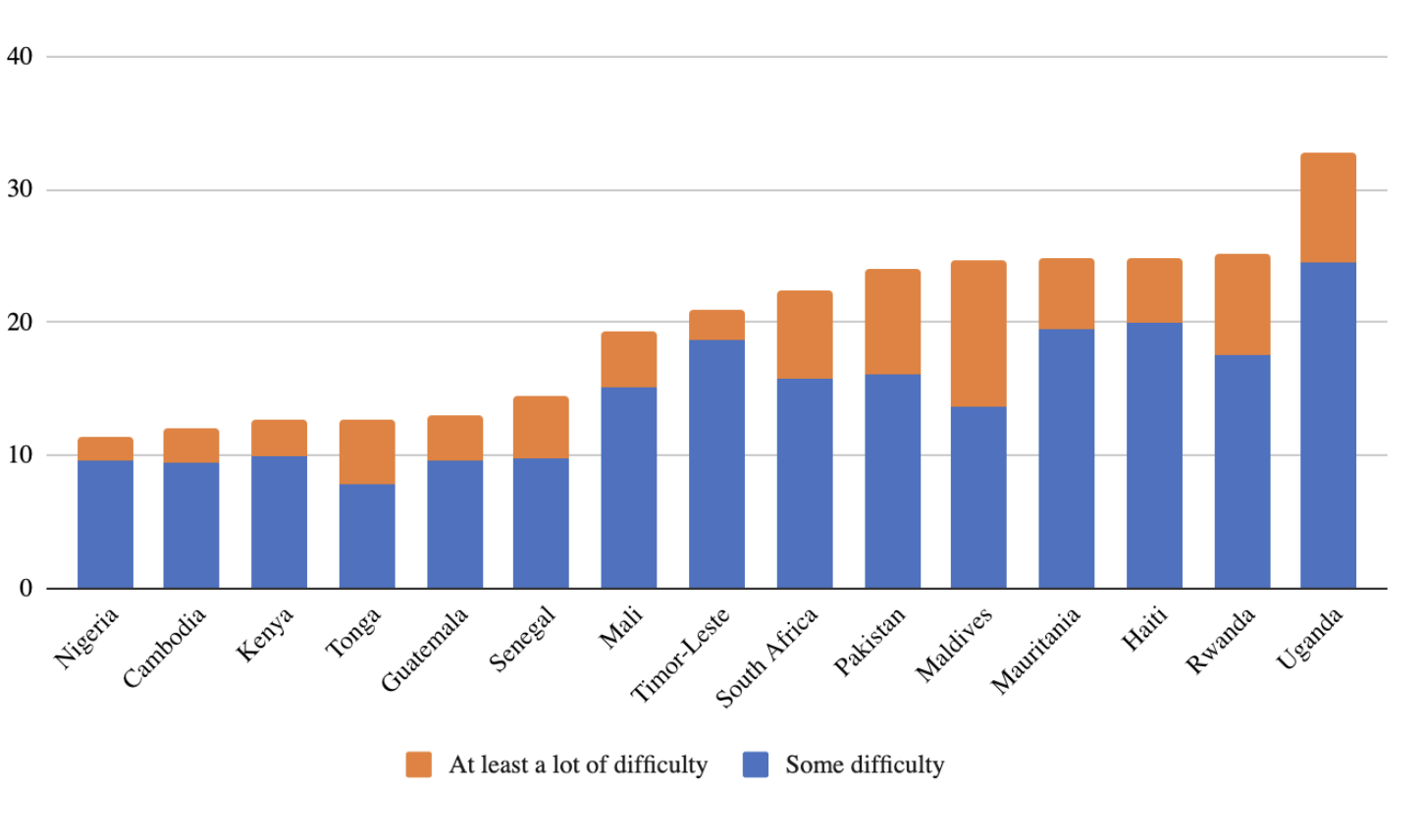
What does the data show us about national prevalence rates?
At the national level, functional difficulties affect a sizeable share of the population (Figure 5.1 and Table 5.1). Figure 5.1 gives the share of adults with any difficulty from the lowest to the highest with a breakdown for some difficulty and at least a lot of difficulty. In all countries, the share of adults with some difficulty is higher than that of adults with at least a lot of difficulty. The median share of adults with any difficulty across the 15 countries stands at 21% ranging from a low of 11.4% in Nigeria to a high of 32.8% in Uganda.[7]
What does the data show us about prevalence rates within countries?
At the regional level, Table 5.1 presents the minimum and maximum values for the share of adults with any difficulty within each country. These results are further illustrated in Figure 5.2 and Figure 5.3 for South Africa and Kenya respectively for any difficulty, some difficulty and at least a lot of difficulty. In South Africa, all regions have prevalence rates above 10%. In Kenya, 45 out of 47 regions have prevalence rates above 5%. More broadly, in the 15 countries, out of 179 regions, only five regions have a prevalence rate below 5%. Results suggest that persons with functional difficulties are geographically spread out within countries.
This pattern continues when zooming in further to a more local level with census data for Guatemala, Kenya and Tonga. For instance, in Guatemala, the share of adults with any difficulty is consistently above 8% at the district level, including in remote and sparsely populated districts in the north.
At the same time, results suggest that prevalence rates do vary within countries from region to region. Within each country, the range of prevalence rates across regions, i.e. the difference between the maximum and the minimum, is above 5 percentage points (p.p.) in all countries except for Senegal at 3.4 p.p. For instance, in South Africa, prevalence rates at the regional level go from a low of 18% in Western Cape to a high of 31% in Northern Cape. At the regional level, we also estimated prevalence rates for different degrees of functional difficulties (some difficulty and at least a lot), different age groups, by rural/urban residence and by gender. The variation across regions in prevalence rates is also found for some difficulty and at least a lot of difficulty separately and within subgroups of the population (women, men, rural, urban, and for different age groups) (Results Tables).
What does the data show us about prevalence rates by age, gender and rural/urban residence and functional domain?
We also considered whether country-level results on prevalence rates from other studies are confirmed within countries at the regional level, in particular, results around higher prevalence rates among older age groups, women and rural residents (e.g. WHO-World Bank 2011). This report finds that at the regional level, prevalence rates are consistently higher for older age groups compared to younger age groups. We find prevalence rates to be higher at the national level among women compared to men in all countries except Mali, Nigeria, and Timor Leste. Interestingly, at the regional level, most countries show a consistent pattern with a higher prevalence rate for women in all or close to all regions. Exceptions are Mali, Mauritania, Nigeria, Senegal and Timor Leste where in many regions, prevalence rates are higher for men compared to women.
We find that functional difficulties at the national level are more common in rural compared to urban areas in all countries except Senegal, Nigeria and Mauritania. Additionally, there is some variation in this rural-urban pattern within countries. In fact, in all countries, we find that in some regions, prevalence rates are in fact lower in rural areas compared to urban ones. For instance, in Mali, prevalence rates are lower in rural areas in four out of nine regions.
At both national and regional levels, we find that functional difficulties in the seeing and mobility domains are consistently the most common, followed by cognition.
Implications for policy
Functional difficulty prevalence rates among adults are significant in all regions within the 15 countries under study. This suggests that persons with disabilities are geographically spread out within countries, i.e. they are not absent in certain sub-national areas and highly concentrated in others This result points out how important it is for disability rights as per the CRPD to be upheld at the local level. Local policy making in general, and in various sectors from education to disaster risk management, needs to be inclusive of persons with disabilities, no matter the region, district or village.
Persons with disabilities and their representative organizations should play a role in local policy making so that their access to local programs and services is made a reality within countries, including in areas that are hard to reach. The COVID-19 pandemic has emphasized the importance of having resources, such as health care services and assistive technology, close to where people live (Mont et al 2023). Our results show the importance of making sure resources and services are accessible to persons with disabilities within countries, including in remote areas.
Implications for data collection and research
Data on functional difficulties needs to be collected in surveys such as the DHS program, national standalone surveys, and in censuses that can be used to map where people with disabilities live. They can inform myriad policies from humanitarian crises responses and climate change preparedness to the supply of assistive technology.
At the same time, we found some subnational variation in the levels of prevalence rates of functional difficulties at regional as well as at district levels. This subnational variation in the prevalence of functional difficulties begs questions for further research. There is a need to find out if this geographic variation in prevalence rates translates into persons with disabilities being differentially exposed to risks that vary spatially such as natural disasters. It may come from a variety of factors such as demographic characteristics (e.g. age, fertility, migration patterns), resources (e.g. access health care services and assistive technology) and environmental factors related to conflict, infrastructure, transportation, or subnational policies and programs. Further research is needed to find out what drives such variation. For instance, it is possible that areas with higher prevalence rates have a higher portion of older people who either migrate into these areas or who reside in these areas while younger people migrate elsewhere. More research is also needed on gender as well as urban versus rural differences, as higher prevalence rates among women and rural residents were not consistently found within all countries.
Figure 5.2: Share of adults with functional difficulties at the regional level in South Africa
5.2.a: Any Difficulty
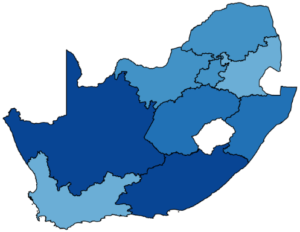
5.2.b: Some Difficulty
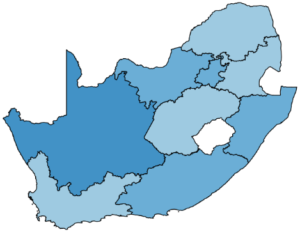
5.2.c: At least a lot of Difficulty
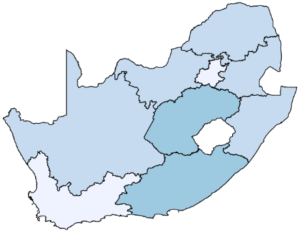

Figure 5.3: Share of adults with functional difficulties at the regional level in Kenya
5.3.a: Any Difficulty
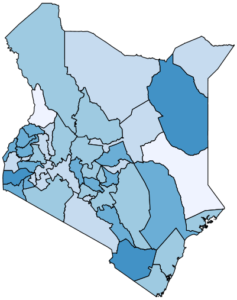
5.3.b: Some Difficulty
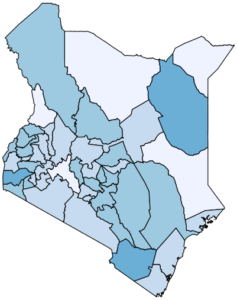
5.3.c: At least a lot of Difficulty
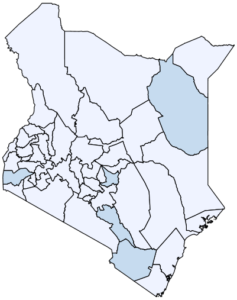

[7] Prevalence rates in Figure 5.1 are not adjusted for age and sex. Prevalence rates adjusted for age and sex for any difficulty are as follows: Tonga 9.9%, Cambodia 10%, Nigeria 10.4%, Guatemala 11.6%, Senegal 12.5%, Kenya 12.7%, Timor-Leste 16.7%, Mali 17.8%, South Africa 19%, Haiti 21.5%, Mauritania 22.4%, Pakistan 23.8%, Rwanda 24.7%, Maldives 24.8%, Uganda 33.3%.
 Go Back
Go Back